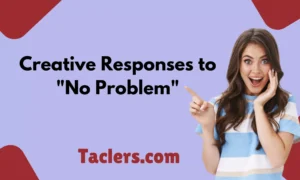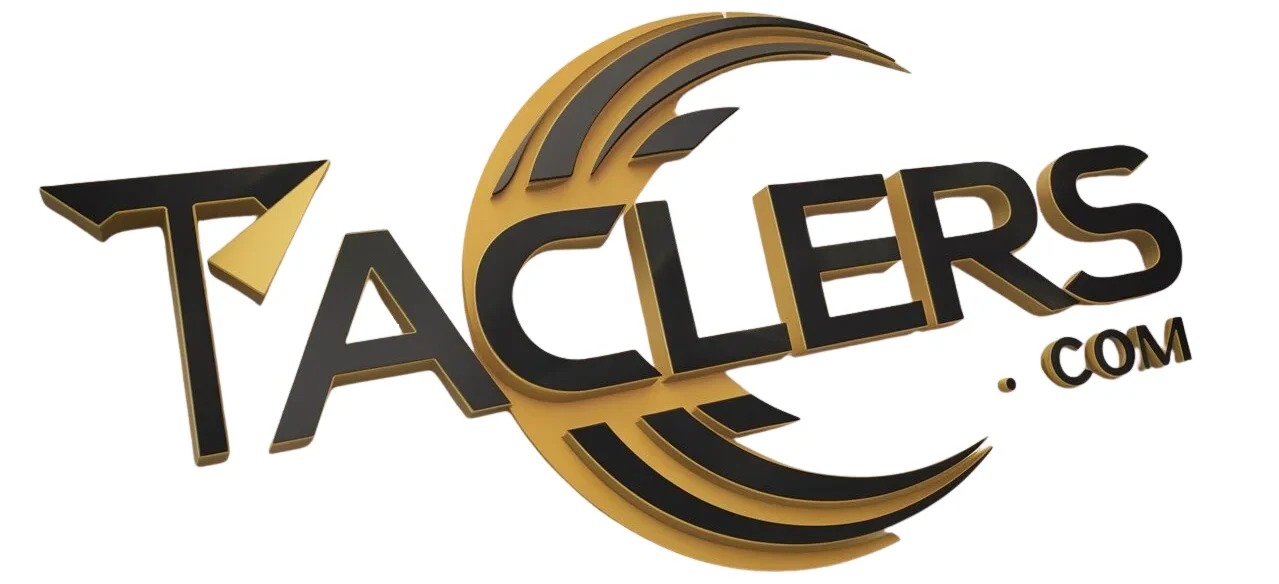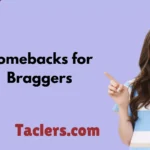Dealing with a “One Upper” can be a frustrating experience. These are individuals who always seem to have a better story, a bigger accomplishment, or a more challenging hardship than anyone else in the room. Whether you’re sharing a personal success or a difficult experience, they quickly swoop in to outshine your narrative. Understanding how to handle such behavior is essential for maintaining healthy relationships and preserving your own self-esteem. In this guide, we’ll explore strategies that are both practical and effective, offering you the tools you need to navigate these tricky social interactions with confidence and grace.
Recognizing the Signs Early
Before diving into how to handle a One Upper, it’s crucial to identify the behavior. This person might not always be obvious, but certain patterns are tell-tale signs. Recognizing these signs early on can save you from being drawn into their competitive game.
Common Behaviors of a One Upper
One Uppers often exhibit similar behaviors, such as:
- Constantly shifting the spotlight: They can’t resist turning any conversation back to themselves.
- Exaggeration: They often stretch the truth to make their stories seem more impressive.
- Downplaying others: They subtly or overtly minimize others’ achievements or experiences.
- Competitive mindset: Their interactions often feel more like a competition than a conversation.
Differentiating Between Friendly Competition and Harmful One-Upmanship
It’s essential to distinguish between someone who is naturally competitive and a true One Upper. Friendly competition can be healthy and motivating, but one-upmanship is rooted in insecurity and often leaves others feeling diminished.
Example: Imagine you’re sharing an accomplishment, like running a 5K race. A One Upper might immediately respond, “That’s great! I ran a marathon last year, and it was incredibly tough. My time was amazing!” The goal here isn’t to congratulate you but to overshadow your achievement.
Table 1: Signs of Friendly Competition vs. One-Upmanship
Behavior
Friendly Competition
One-Upmanship
Response to Others’ Success
Congratulates, then shares their own success
Minimizes others’ success, highlights their own
Tone
Encouraging, supportive
Boastful, dismissive
Body Language
Open, relaxed
Defensive, dominant
Don’t Engage in Their Game

One of the most effective strategies for handling a One Upper is simply not to engage. By refusing to play their game, you maintain your integrity and avoid unnecessary stress.
The Importance of Staying Calm
It’s easy to feel frustrated or annoyed when someone constantly tries to outdo you. However, reacting emotionally can give them the satisfaction they’re seeking. Instead, stay calm and composed. Remember that their behavior says more about them than it does about you.
Strategies for Avoiding Engagement
Here are a few tips to help you avoid getting drawn into their competitive loop:
- Acknowledge and move on: Briefly acknowledge their comment and then steer the conversation back to the original topic or a different subject.
- Use noncommittal responses: Phrases like “That’s interesting” or “Good for you” can help you disengage without being rude.
- Stay focused on your goals: Remind yourself why you’re in the conversation. If it’s a professional setting, keep the discussion centered on work-related topics.
Case Study: Handling a Competitive Colleague In a workplace scenario, imagine a colleague who always tries to outshine you during meetings. By staying calm and not reacting to their one-upmanship, you can maintain your professional demeanor. When they attempt to dominate the conversation, you can redirect the focus back to the agenda, keeping the meeting productive and on track.
Tactfully Address the Behavior
Sometimes, the best way to handle a One Upper is to address the behavior directly. This approach requires tact and diplomacy, but it can be highly effective in setting boundaries and discouraging future incidents.
Using “I” Statements
“I” statements are a powerful tool for expressing how someone’s behavior affects you without sounding accusatory. For example, instead of saying, “You always try to outdo me,” you might say, “I feel unappreciated when the conversation shifts away from what I’m sharing.”
Example Phrases to Use
Here are a few ways to tactfully address one-upmanship:
- “I noticed that we often end up comparing stories, and I want to make sure everyone feels heard.”
- “I’m happy to hear about your achievements, but it’s also important to me that my experiences are valued.”
- “I appreciate your input, but I’d like to finish sharing my thoughts.”
Table 2: Impact of “You” vs. “I” Statements
Type of Statement
Example
Potential Impact
“You” Statement
“You always make it about yourself.”
Defensive response, potential conflict
“I” Statement
“I feel like my experiences are overshadowed.”
Opens dialogue, less confrontational
Redirect the Conversation to Neutral Territory
If you find yourself trapped in a conversation with a One Upper, redirecting the discussion can be an effective way to regain control. Steering the conversation to a more neutral topic can diffuse the competitive atmosphere.
Techniques for Steering the Conversation
- Ask open-ended questions: Shift the focus by asking a question that doesn’t lend itself to comparison, such as “What are your thoughts on this topic?”
- Introduce a new subject: Gently guide the conversation to a different subject that’s less likely to trigger one-upmanship.
- Use curiosity: Express genuine curiosity about something unrelated to the competition. For example, “That’s interesting—how did you get into that hobby?”
Example of a Successful Redirection
Imagine you’re discussing your recent vacation, and a One Upper starts talking about their much more extravagant trip. You could say, “That sounds amazing! I’d love to hear more about the culture there. How did you find the local food?” This response acknowledges their input while steering the conversation in a more neutral direction.
Praise Their Achievements Strategically
While it might seem counterintuitive, praising a One Upper can sometimes defuse their need to compete. By acknowledging their accomplishments, you take away their incentive to outdo you.
The Power of Genuine Acknowledgment
Praising someone doesn’t mean you’re validating their behavior. Instead, it can be a strategic move to shift the dynamic. When a One Upper feels recognized, they may feel less compelled to compete.
How to Praise Without Feeding the Competition
- Be specific: Focus on a particular aspect of their achievement that you genuinely admire.
- Keep it brief: Acknowledge their success and then smoothly transition back to the original topic.
- Balance the conversation: After praising them, bring the conversation back to your experience or to a shared interest.
Example: If a One Upper boasts about a major work project, you could say, “That’s an impressive project! It sounds like you put a lot of effort into it. I’ve been working on something similar in my field—let me share it with you.”
Set Clear Personal Boundaries
Setting boundaries is essential when dealing with any challenging behavior, including one-upmanship. Clear boundaries help protect your emotional well-being and maintain healthy relationships.
Why Boundaries Matter
Boundaries signal to others what behavior is acceptable and what is not. Without boundaries, a One Upper may feel free to continue their competitive behavior unchecked.
Tips for Establishing Boundaries
- Communicate directly: Let the One Upper know when their behavior crosses a line.
- Stay firm: Don’t waver on your boundaries, even if the One Upper tries to push back.
- Use boundary-setting language: Phrases like “I’m not comfortable with this conversation” or “Let’s keep this discussion positive” can help set limits.
Case Study: Setting Boundaries in Social Situations In a social setting, imagine you’re at a gathering where someone constantly tries to one-up your stories. By calmly stating, “I’m here to enjoy everyone’s company, and I’d rather not turn this into a competition,” you establish a boundary that encourages more respectful interactions.
Extend Empathy (But Stay Firm)
Understanding the underlying reasons for one-upmanship can help you approach the situation with empathy. However, it’s crucial to balance empathy with firmness to avoid enabling the behavior.
Why People Engage in One-Upmanship
One-upmanship often stems from insecurity or a need for validation. By recognizing this, you can approach the situation with compassion while still protecting your boundaries.
Balancing Empathy with Assertiveness
- Acknowledge their feelings: Show that you understand where they’re coming from without condoning their behavior.
- Stay true to your boundaries: While empathy is important, don’t let it undermine the limits you’ve set.
- Redirect with care: Use gentle redirection to steer the conversation away from competition without invalidating their feelings.
Example: If a One Upper starts comparing hardships, you might say, “I can see that was a tough experience for you. Let’s talk about how we can support each other through our challenges.”
Seek Support from Others
Sometimes, handling a One Upper on your own can be challenging. In such cases, seeking support from others can provide the reinforcement you need to manage the situation effectively.
The Value of a Supportive Network
Having a network of friends, colleagues, or mentors who understand the situation can offer you advice, perspective, and emotional support.
When to Involve a Third Party
If the One Upper’s behavior becomes too much to handle alone, involving a third party—such as a mutual friend, HR representative, or mediator—can help address the issue more formally.
Case Study: Involving a Mediator at Work In a professional setting, if a colleague’s one-upmanship is affecting your work environment, you might involve a mediator or HR representative to facilitate a conversation. This approach ensures that the issue is addressed in a constructive manner, with the goal of improving workplace dynamics.
Consider the Context
Not all situations require the same approach. The context in which the one-upmanship occurs—whether it’s a professional setting, social gathering, or family event—can influence how you handle it.
Adapting Your Approach
- Professional Settings: In the workplace, diplomacy and professionalism are key. Focus on maintaining a collaborative atmosphere rather than engaging in competition.
- Social Gatherings: In social situations, humor and lighthearted redirection can be more effective.
- Family Events: With family, a mix of empathy and boundary-setting is often necessary, as the relationships are more personal.
Tailoring Your Response
Consider the relationship you have with the One Upper. Is it a colleague, friend, or family member? The closer the relationship, the more likely you’ll need to balance firmness with empathy.
Example: If a family member constantly one-ups you during gatherings, you might choose to have a private conversation with them, expressing how their behavior affects you and setting clear boundaries for future interactions.
Use Humor to Diffuse Tension
Humor can be a powerful tool for handling a One Upper. It can lighten the mood, disarm the other person, and shift the conversation away from competition.
When and How to Use Humor
- Assess the situation: Make sure humor is appropriate for the context and won’t be taken the wrong way.
- Be lighthearted: Keep your humor gentle and non-confrontational to avoid escalating the situation.
- Use self-deprecation: Sometimes, making a joke at your own expense can diffuse tension without putting the One Upper on the defensive.
Example of Humor in Action
If someone tries to outdo your story about a recent achievement, you might respond with a laugh and say, “Wow, I guess I’ll have to step up my game!” This response acknowledges their input while subtly pointing out the competitive nature of the exchange.
Quote on Humor: “Humor is persons, greatest blessing.” – Mark Twain
Final Thoughts
Dealing with a One Upper can be challenging, but by employing the strategies outlined in this guide, you can navigate these interactions with confidence. Whether you choose to address the behavior directly, set clear boundaries, or use humor to diffuse the situation, the key is to remain true to yourself and not let someone else’s competitive nature diminish your own self-worth.
Remember, the goal is not to change the One Upper but to manage your interactions with them in a way that protects your well-being and maintains healthy relationships. With practice, you’ll find that handling one-upmanship becomes easier, and you’ll be better equipped to foster positive, respectful connections with others.
Submit a Comment We’d love to hear your experiences with One Uppers. What strategies have worked for you? Share your thoughts and tips in the comments below!

Ethan Richards, a distinguished writer at Taclers.com, excels in blending sharp insights with engaging storytelling. His background in sociology adds depth to his analysis of human reactions, making his articles both thought-provoking and entertaining. Explore the world of reactions with Ethan and see familiar moments in a whole new light.










